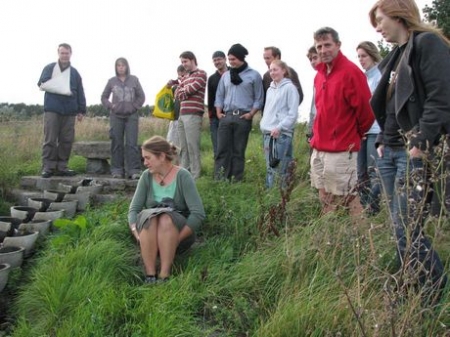Free public lecture series at Birkbeck, University of London.
Last night I was fortunate enough to attend the first in a series of six lectures around the theme of how our land is used and how it should continue to be used. The principle focus was on sustainable rural UK land use, (which is not getting as much attention as sustainable urban development) with some international elements touched upon.
The first lecture was entitled ‘Whose Land is it anyway? And how can government policy reconcile competing demands on it in an era of climate change? By Professor Philip Lowe OBE, Director of RELU, based at Newcastle University.
Philip Lowe is at the forefront of current research and ideas about long term sustainable land use, he headed up an online land use debate, the Great Debate, (inviting some 4,500 members of the public to discuss how they feel our land should be used). His views and opinions are well respected in the environmental movement and indeed were very well received last night, a cracking start to this lecture series!
There was not a seat to spare in the main lecture hall at Birbeck College, a sign that people from students to conservationists, farmers to NGO directors are electing to broaden their understanding of this subject, bring new ideas to the forum and discus those issues which concern them.
On a personal level, I must confess I have never been introduced to so many new concepts and ideas in the fifty or so minutes Philip talked for, (he made our course director Howard Lee’s delivery look slow in comparison, sorry Howard but the ideas presented in Tuesday’s soil science lecture was the most intense download I’ve received to date!) I feel in no position to represent all of Philips points here, however some key ideas and terms stuck in my head as follows:
• Mitigation versus Adaptation
• Dig for Victory, echoes of.
• Smart production
• Precision farming
• Whole Farm Approach
• Buffer Zones/Strips
• Minimal Tillage
• Carbon Accounting
• Landscape Engineering
• Reorientation of production incentives (in relation to CAP).
• Environmental Cooperatives.
I am a cooperative kind of girl and when I heard Philip mention Environmental Cooperatives (a new term for me), my radar was on full power! The Netherlands is a hotbed for these cooperatives (aren’t the Dutch much more forward thinkers/doers than us). They have both farmer and non-farmer members and collective environmental contracts help management at landscape scale. The cooperatives recognise it’s all about getting the right people, in the right place at the right time.
Minimal tillage was something discussed in our Crop Production lecture very recently, and I believe this is important to adopt on agricultural land (where possible) to reduce farming costs, fossil fuel dependency whilst maintaining the integrity of the soil’s fertility and long-term sustainability.
In the debate afterwards, the term precision farming was discussed at some length. It was interesting to hear what people thought the concept was, someone thought it may involve lots of part time farm workers managing the land in a specific way and someone else asked if it was inclusive of GM crops. What Philip had to say was that his use of the term related more to ecological engineers, indeed he went as far as saying he felt a new breed of people with these skills was required.
Finally there was a phrase Philip mentioned that really summed up the evening nicely for me:
‘Think globally, Act locally’
Now I, (just like my fellow Hadlow students I’m sure) will be very keen to find my niche within the frame work of the good old Dutch cooperative saying ‘Get the right people in the right places doing the right thing!’
Watch out world, there’s another facet of the diamond preparing to sparkle, er Howard can you just dust me off a bit more behind the ears please ☺
Nina
Enjoy, engage, debate, discuss, enthuse and you will change the environment, your environment☺



